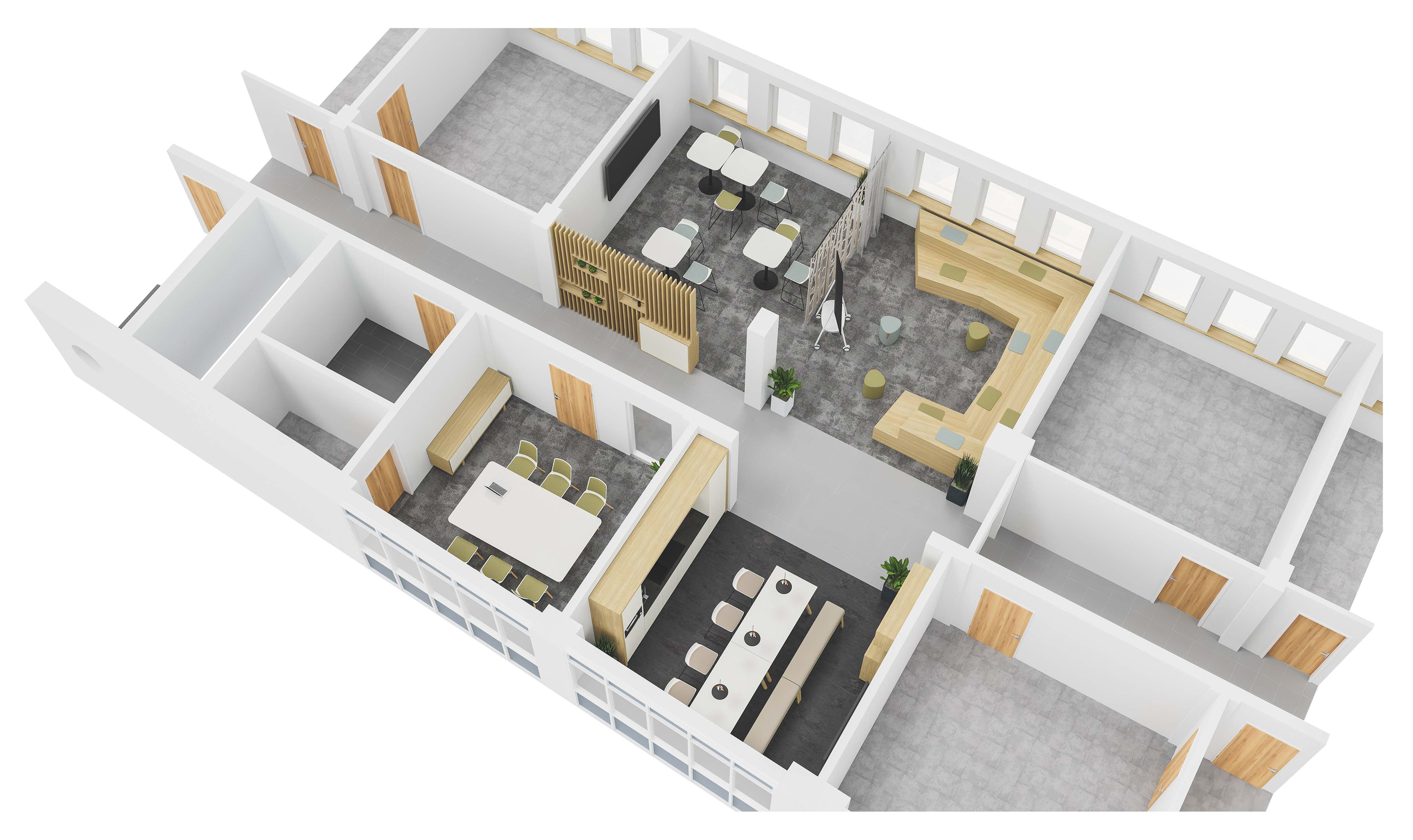Modern creative spaces. How one boosts creative potential.
By Franz Gurtner, 27.01.2021

Creativity cannot be regulated! But it can be brought into swing. With the right people and an inspiring atmosphere, for example. However, what is also clear is the need for the corporate culture that allows creativity in the first place.
Creativity describes people’s ability to operate creatively. To develop ideas and stimulate innovations – in short: whenever it clicks in one’s head, creative potential is awakened. The spatial environment makes a key contribution to this – in a positive and a negative sense. Bernhard Kern, Managing Director of the office consulting company Roomware, has been aware for the past few years of how the spatial offerings in office buildings are changing heavily towards creative areas: “While the classic office forms such as cell or large room offices are losing importance heavily, an increasing number of co-working units are emerging that allow large organisational and creative scope for spatial implementation. The main objective is to promote high meeting quality and creative collaboration.” Kern even sees the Covid pandemic as producing an additional boost for the design of creative areas: “Working from home has come to stay. This ensures that, depending on the company and the industry, at least 10 to 20 per cent of office space will become free to be used differently in future. This gives rise to new, playful spaces for project work, workshops, brainstorming and strategy development.”
What can creative spaces offer?
There is no such thing as an idealistic creative space, as the creative freedoms are unlimited. However, there are certain standards that creative working ought to support in the interests of idea development, design thinking and scrum. “Creative areas radiate dynamics and mobility. They have an inspiring, inviting and stress-free effect – designed as a free space concept without coercions. This can be felt, for example, in the use of different levels: from couching to standing and walking. Furniture also makes a significant contribution to this – supported by diverse media, from flipcharts to organisable walls to multimedia equipment, with which remote participants can also be integrated. Important basic factors also include good acoustics and a pleasant indoor climate. General areas such as tea kitchens and cafes should be installed spatially close or integrated directly,” says Bernhard Kern, summarising the essence of creative areas.
Creative zones instead of individual rooms.
An increasing number of companies are not just adapting one room for creativity, but are offering entire zones and dedicated environments for creative working. Roomware project manager Christina Pasch provides insights into two of her projects in which this zone model was implemented:
The service company IKT Linz bundles all the expertise for information and communication technology of the city of Linz. In the middle of a traditional, very strongly cell-orientated office structure, an open, zoned creative and meeting zone was created. “We divided it into three areas: A space for daily stand-up meetings with striking sitting steps, which can be combined with the connected workshop area using flexible partitions. Together, the two rooms form the so-called arena. The third area was designed as an open working cafe that not only serves for regeneration, but is also integrated into creative processes. The rooms can be adapted at any time to project groups of different sizes.”
It is similar with another of Pasch’s projects, TÜV Austria’s “Next Horizon Lab”. This is a co-working space in which expertise and practical market experience are combined with visionary approaches. “The areas zoned using acoustically effective room separation elements are bookable for workshops, conferences or project work. However, they can also easily be used for concentrated working, as a quiet zone or for informal exchanges of thoughts. The free interior design, the richly varied furniture and the mobile media equipment provide for the greatest possible flexibility in use,” says Pasch, outlining the project.
The inflation of creativity.
Christian Schuldt, an author for the “Zukunftsinstitut”, also occupies himself in the current trend study “Free Creativity” with the inflationary outgrowths of the creativity faith. For him, modern business is downright obsessed with the desire to tap into the creative potential of creativity in a methodically efficient manner. He advises that the all too strong methodical fixation with creativity can even be “counter-creative”. Far more important are the playful approach of companies to releasing creative potential and reflection on the basic creative abilities of humans. For, again: creativity cannot be regulated!
Picture: Roomware Consulting




